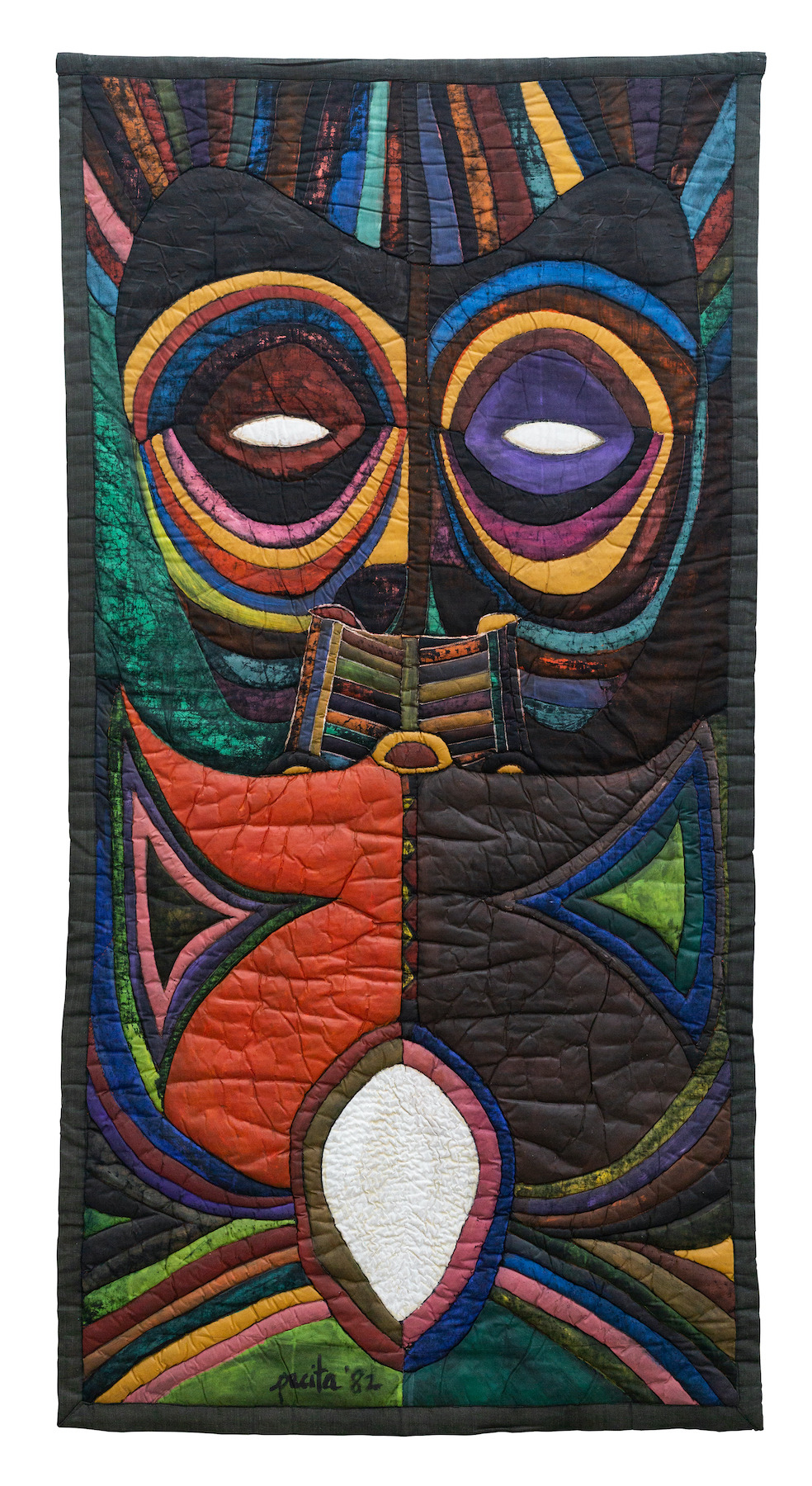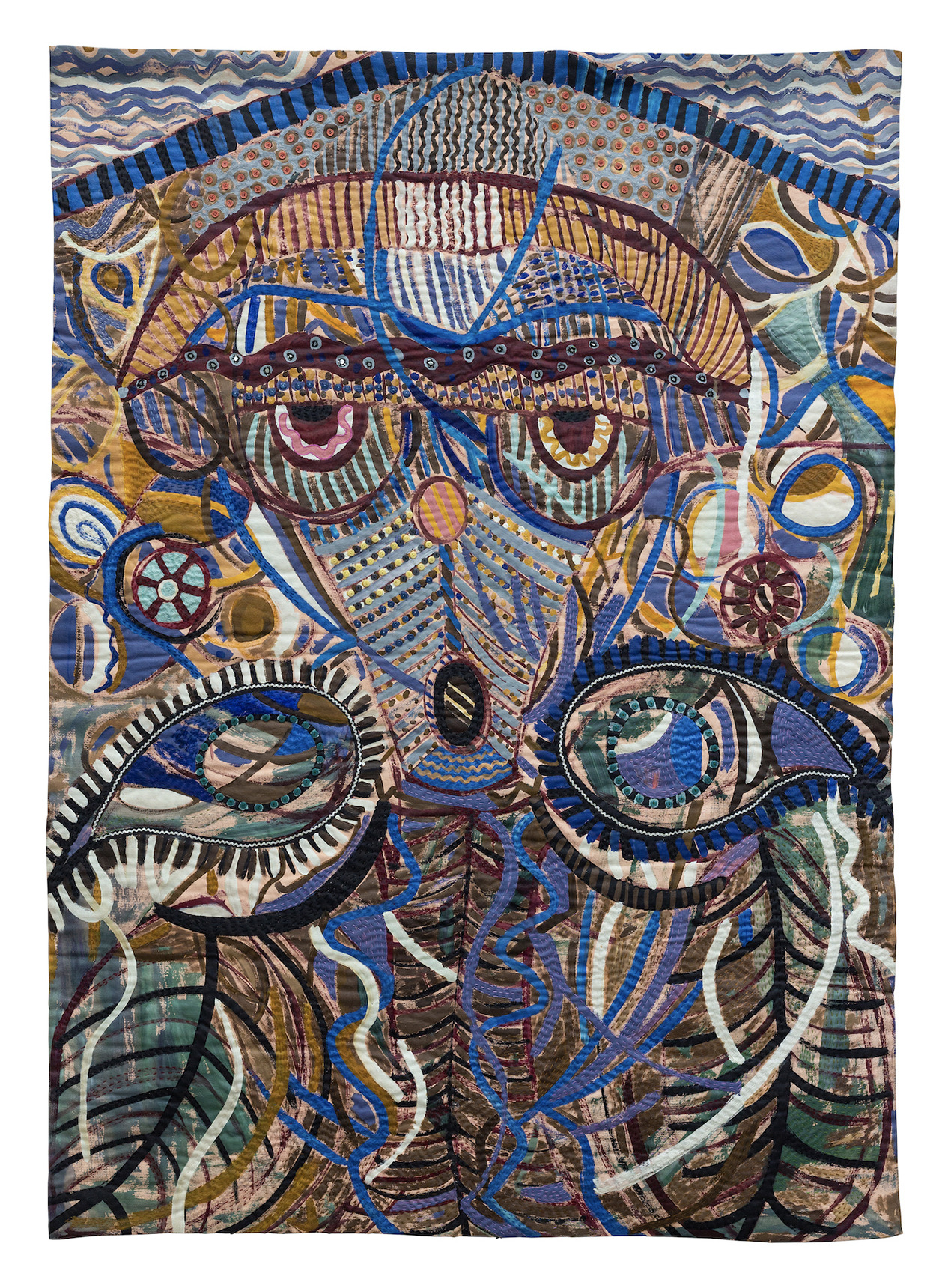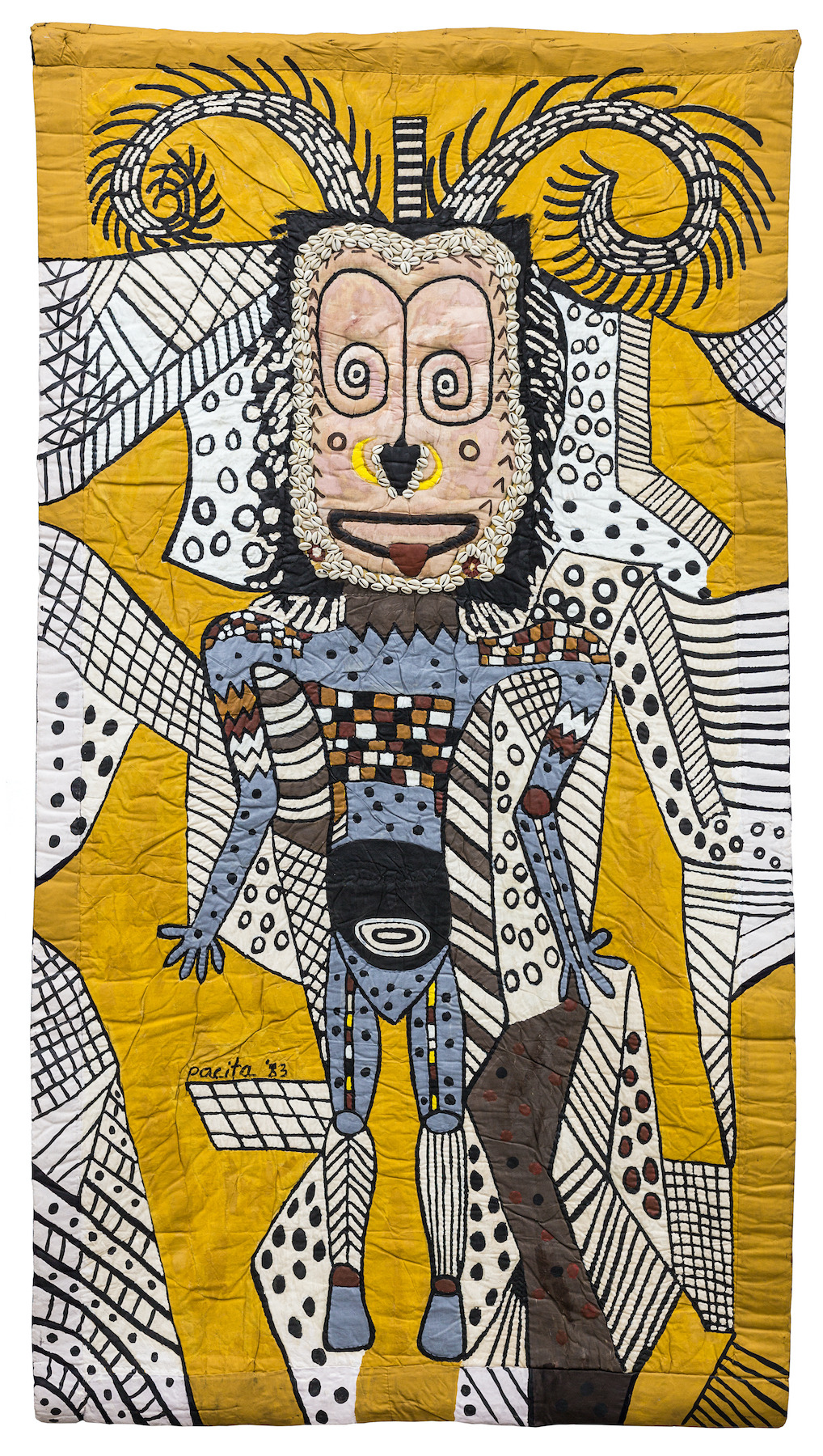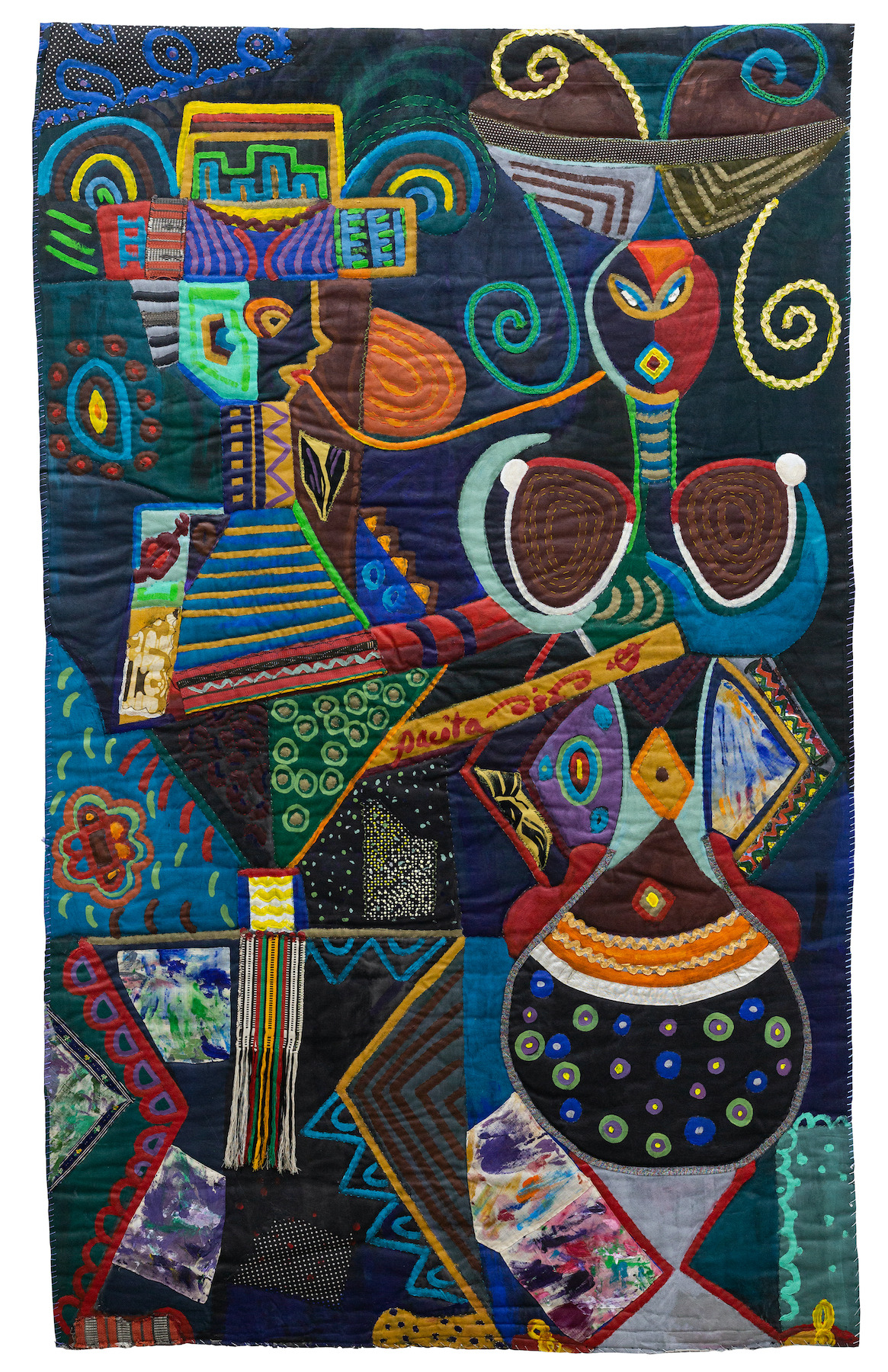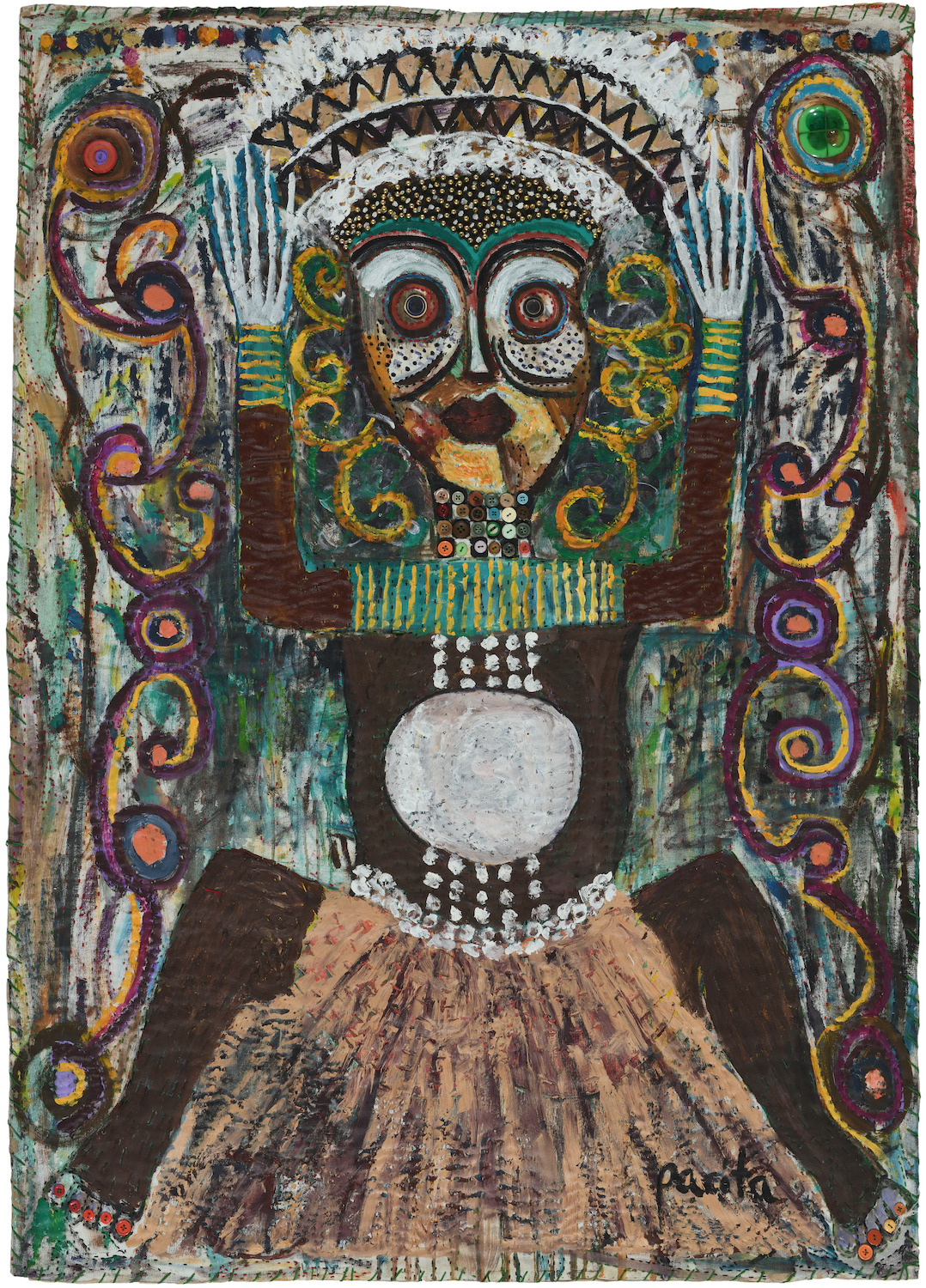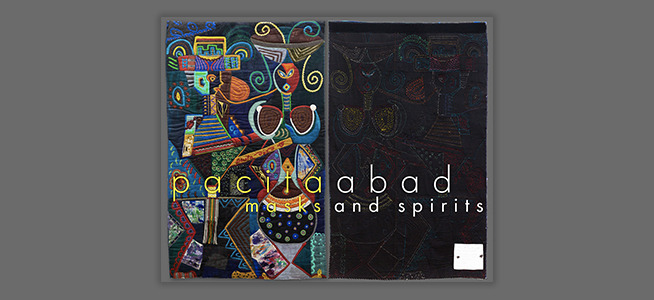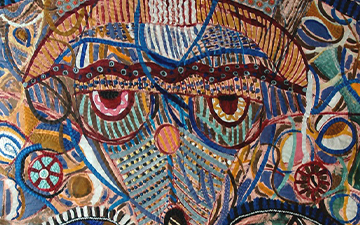
Masks and Spirits
Pacita Abad
Silverlens, Manila
About
It is in fabric that Pacita Abad’s practice finds a medium capacious enough to accommodate her itinerant artistic life and an abundance of accumulated material. Beads and buttons, sequins and stones, shells and shards of glass, these trinkets find their place in textile. From these, Abad crafts tapestries inspired by her life of travel and her immersion in cultures of the world. She traveled with her husband who was a development economist and in each destination Abad made sure to find time and space for her practice to take root. Until her death in Singapore in 2004, Abad made art. It is a peregrine practice that was nonetheless sensitive to the particularities of place and an earnest and imaginative sympathy to its people. Her life was shaped by the complexities of a worldly womanhood: the pedigree of a political family from the island province of Batanes in the northern Philippines, the feminized labor of sewing as heirloom and source of livelihood in her first few months in San Francisco, and a view of development and marginality shaped by her dual roles as a brown immigrant and spouse of an American economist. While this itineracy was certainly enabled by a particular form of capital, her artistic practice and career recognized her idiosyncratic position as a woman entangled in relations of labor and power who manages to unravel for herself a room of one’s own. Travelling is an important aspect of her practice. In this sense we recall anthropologist James Clifford’s consideration of travel as “a range of practices of situating the self in a space or spaces grown too large.” Travel, for Clifford, plays out urgencies of address, both in terms of locating the self, but also in its manner of convening and conversing with a plurality of contexts and constituents. This is a daunting task, working with scale and labor that may overwhelm one’s enthusiasm or elan. Abad is an exceptional figure in this regard: she embraced the vast and variegated, allowed herself to be captivated by the foreign and the incommensurable. The aesthetic impulse is not to capture or to discipline life into form, but to find congruence in which this scale and its vitality are made to be sensible and allowed to thrive. Perhaps it is to this that Abad’s large-scale textiles speak to, a vibrant view of a world in all its irreducible magnitude.
In her use of trapunto, a technique of padding and quilting, she gives fabric textural and tectonic quality and manifests textile as simultaneously surface and dimension. Abad considered herself first and foremost a painter: after painting canvas, she then quilts and hand sews embellishments onto fabric. The works in the series Masks and Spirits presents us with artistic tendencies foundational in Abad’s prolific practice. Produced from 1982 to 2000, each work is an exploration of fiber and fabric that traverses the possibilities of technique and material. Each one is a fascination with skin and flesh: embossing becomes lineament, each quilt a contour, trinkets give character. In some works the painterly gesture is more pronounced, such as in Komoro Festival (2000), where a masked figure is portrayed wearing a necklace of buttons. A comparable tendency is seen in Hagen Man (1983), a work of painted canvas embellished with cowrie shells. In this instance, an idiom more like mosaic is preferred, towards more geometric flourishes. This graphic and geometric quality finds a more astute articulation in Omdurman (1982), in which a neat composition of symmetrically structured streaks of colored fabric creates a mask that covers the entire stretch of canvas. Creases from the padding and fine quilting craft intricate texture. These tendencies translate to an idiosyncratic idiom of figuration using ribbon, strings of handwoven yarn, and other swathes of color in On reaching 37 (1983), deviating from the painterly impulses of the other works. Finally, it is in the work Red-Eye Mask (1994) that these different techniques discern the specificity of textile as medium. Whereas the previous works mentioned tend to the prospects of the painterly and the graphic, in Red-Eye Mask textile becomes an exuberant surface to which various materials are made to adhere and simultaneously proffers different ways of making sense of image and figure. This way surface becomes another way to create texture and texture is harnessed to create similitudes of surface. Consider how the central image of the work, the eponymous red-eye mask, is complemented by another set of eyes shaped like teardrops or a paisley motif, as if we are looking at two masks. The work unravels neat composition into a kaleidoscopic picture with its layers of shapes, vivid tangles of color, and thicket of material. It is these maneuvers that foreground the proficiency of Abad’s fabric: in her hands textile does not aspire to painting, it is its own venture, its own engagement with form and its possibilities.
Text by Carlos Quijon, Jr.
Pacita Abad (b. 1946, Batanes, Philippines; d. 2004, Singapore) was the daughter of a congressman, who had hoped that she would traverse a similar political path. But the course of Abad’s life changed when she decided to take up painting, after a year of travelling in Iran, Afghanistan, Pakistan, India, Sri Lanka, Myanmar, Thailand, Laos, Taiwan, and Hong Kong in 1973. Abad later married a developmental economist, Jack Garrity, whose work predisposed them to travel to developing countries. Her experiences in these remote regions informed her subject matter and aesthetic practice: she learned traditional art techniques from in each of the places she visited and incorporated these methods into her art. In the late seventies and early eighties Abad introduced a quilting method onto her canvasses, which she called trapunto. Here, she layered various objects — stones, sequins, glass, buttons, shells, mirrors, printed textile —atop the surfaces of these paintings, before stuffing and stitching them.
Characterised by vibrant colour and accumulated material, these large scale trapunto paintings traverse a diversity of subject matter: from tribal masks and social realist tableaus, to lush and intricately constructed underwater compositions and abstractions. She lived and travelled in numerous countries –from Bangladesh to Sudan, Sudan to Jakarta, Jakarta to Boston, Washington D.C. to Manila – and it was this itineracy that defined and shaped Abad’s cross-cultural practice. Abad’s work work brought together images and experiences across cultures, economies and histories. Her pieces offered global reflections long before the discourses of globalisation and transnationalism were felt in the art world.
Abad’s work has been featured in solo exhibitions at the National Museum, Jakarta, Indonesia; Hong Kong Arts Centre, Hong Kong, The Museum of Philippine Art, Manila; Cultural Center of the Philippines, Manila; Bhirasri Museum of Modern Art, Bangkok, Thailand; Singapore Tyler Print Institute, Singapore; The National Museum for Women in the Arts, Washington, D.C.; and the National Center of Afro-American Artists, Boston, among others. She has participated in numerous group exhibitions, including: Beyond the Border: Art by Recent Immigrants, Bronx Museum of the Arts, New York; Asia/ America: Identities in Contemporary Asian American Art, a traveling exhibition organized by the Asia Society, New York; Olympiad of Art, National Museum of Modern Art, Seoul, Korea; 2nd Asian Art Show, Fukuoka Art Museum, Fukuoka, Japan and La Bienal de Habana, Havana, Cuba. Abaddied in Singapore in 2004.
Works
